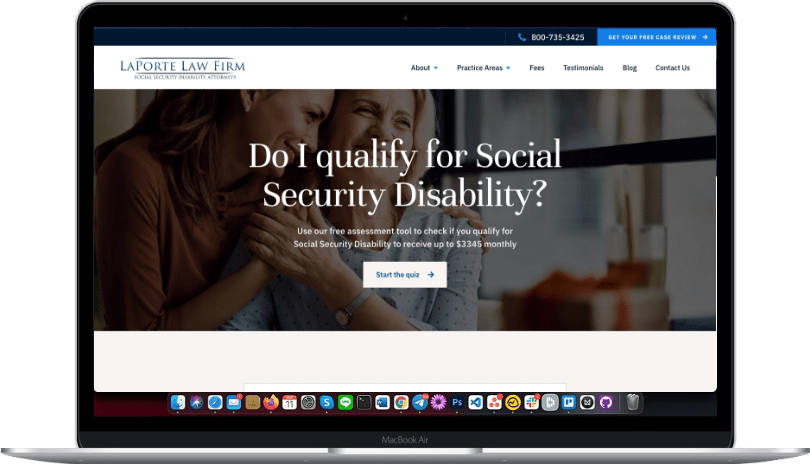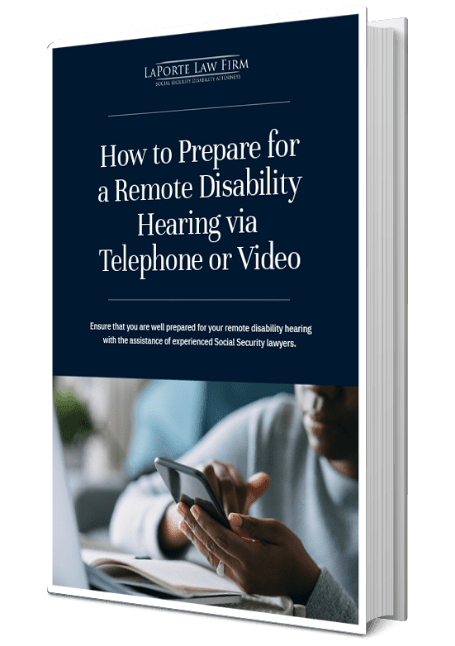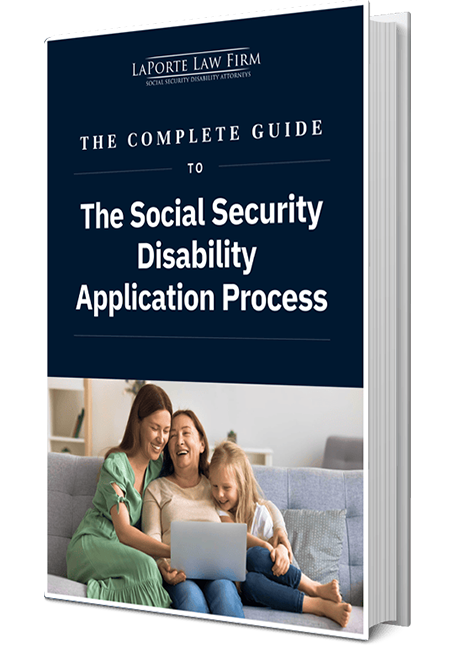
On July 4, 2025, President Trump signed into law the One Big Big Beautiful Bill. This federal statute contains hundreds of tax and spending provisions that will have a significant impact on the economy and the daily lives of people in the United States.
With the signing of the bill, there’s a lot of buzz about how it will reshape the financial security for millions of Social Security beneficiaries and those who are entering Social Security retirement age.
Social Security is a lifeline for many Americans, providing crucial support to retirees, disabled individuals, and families. As an integral part of the nation’s safety net, any legislative changes can significantly affect the well-being of millions of current and future beneficiaries. With the Big Beautiful Bill making headlines, it’s essential to understand its potential implications on Social Security retirement and disability programs. In this article, we’ll delve into the components of the bill and unpack its impacts on Social Security.
Impact on Social Security Benefits
Social Security is a massive government program; approximately 73 million people in the United States receive and depend on benefits from the Social Security Administration (SSA). While the Big Beautiful Bill aims to bolster Social Security’s support for millions, it also prompts important discussions about funding, fairness, and long-term viability.
Taxes on Social Security benefits
On July 3, 2025, the Social Security Administration sent out an email with the subject line, “Social Security Applauds Passage of Legislation Providing Historic Tax Relief for Seniors.” In this email, the SSA celebrated the passage of the bill, stating that the new law eliminates federal income taxes on Social Security benefits and provides an enhanced deduction for taxpayers aged 65 and older.
It’s important to understand that Social Security benefits are taxed like other income, and the new bill does not change this. The provisions of the new law are more complicated. The new law does not exempt taxes on Social Security benefits; instead, it adds a new tax deduction for people 65 and older. The new senior deduction is $6,000 a year for individuals and $12,000 a year for couples who are aged 65 or older. The provision applies as long as income falls under a certain ceiling (below $75,000 for single filers or $150,000 for married joint filers). This legislation means that some people won’t pay taxes on their benefits because it increases their standard deduction.
The White House Council of Economic Advisors estimates that under the new law, 88% of older adults receiving Social Security benefits will pay no taxes on them. Before the bill was passed, the Social Security Administration estimated that nearly two-thirds of Social Security recipients did not pay taxes on their benefits because their incomes were too low to trigger the tax.
The tax provision will be in effect for tax years 2025 through 2028.
Repercussions for SSA’s trust funds
The taxation of Social Security benefits contributes revenue to the Social Security trust funds, helping to support benefit payments. Before the passage of the new bill, the Social Security Administration’s trust funds were projected to become depleted by 2033. If that happened, monthly benefits for millions of retirees would automatically be cut by about 23% unless Congress took further action.
However, according to a report by the nonpartisan Committee for a Responsible Federal Budget, the Big Beautiful Bill could accelerate this depletion date to 2032 and potentially increase the size of the required benefit cuts. This is because the bill reduces the amount of tax revenue flowing into the trust fund by lowering the number of older Americans who pay taxes on their benefits and by decreasing the tax rates on those benefits.
While the bill offers immediate tax relief to some seniors, it also creates a trade-off by weakening the financial health of the Social Security trust funds. This could lead to larger cuts or increased funding challenges in the near future, which is a negative outcome for the program’s long-term stability and for future beneficiaries.
Other Aspects of the Big Beautiful Bill
Beyond the implications for Social Security benefits, the bill will also have other impacts. Here are a few key features to know about:
Extension of the 2017 tax cuts
During his first term, Trump signed the Tax Cuts and Jobs Act, which reduced taxes for corporations and individuals across most income levels. Key parts of the law were set to expire in December. The new budget bill makes these tax cuts permanent and increases the standard deduction by $1,000 for individuals and $2,000 for married couples through 2028.
A Tax Policy Center analysis concluded that all households would get a tax cut, but the top 20% of earners — those making $217,000 or more — would receive about 60% of the total benefits. On average, they’d see a $12,500 tax cut in 2026, equal to 3.4% of their after-tax income.
In contrast, the lowest-income households (earning $35,000 or less) would get an average tax cut of just $150, less than 1% of their after-tax income. Middle-income households receive about $1,800 on average, or 2.3% of their after-tax income.
The Congressional Budget Office predicts that this will add $3.4 trillion to the deficit over the next decade.
Increasing the debt ceiling
The bill lifts the nation’s debt limit by $5 trillion. Raising the debt limit doesn’t mean the government is spending more money. Instead, it allows the government to pay for things Congress already approved. If the limit isn’t raised, the government could run out of money and miss payments, which experts warn could seriously harm both the US and the global economy.
Healthcare implications
The bill will add additional restrictions to Medicaid, a joint federal and state program in the US that provides health coverage to low-income individuals and families. California’s state-specific version of Medicaid is Medi-Cal, offering similar benefits to eligible California residents.
The bill will add work requirements to Medicaid enrollees: they will have to regularly file paperwork to demonstrate they are working, volunteering, or attending school at least 80 hours a month, or that they qualify for an exception. These requirements impose additional administrative burdens that have not been proven to work when tied to other programs. Census studies show that 90% of Medicaid recipients are working, attending school, or living with an illness or disability.
Similar policies tied to other benefits have not led to any increase in employment. When states have implemented work-related eligibility conditions for Medicaid, many individuals who otherwise qualified lost coverage — not because they didn’t meet the requirements, but because of the complicated process of proving compliance or fitting into narrowly defined exceptions.
In addition, the bill gradually lowers provider taxes — which are the fees that states charge healthcare providers to help cover their share of Medicaid costs — from 6% to 3.5% by 2032. This puts many hospitals, especially rural ones, at risk of closing.
In addition, states that have expanded Medicaid are required to charge enrollees up to $35 for certain services if their income is between the federal poverty level ($15,650 for an individual in 2025) and 138% of that amount ($21,597).
For those with Affordable Care Act, or Obamacare, coverage, marketplace policyholders will be required to update their income, immigration status, and other information each year to retain coverage, rather than being reenrolled automatically. They will also have less time to enroll.
Changes to SNAP
SNAP benefits, also known as food stamps, are a federal program that helps low-income individuals and families buy groceries. Participants receive an electronic card (similar to a debit card) that can be used at most grocery stores to purchase food. The goal of SNAP is to reduce hunger and improve nutrition for those in need.
The Big Beautiful Bill adds work requirements for SNAP enrollees who do not have dependents. It also requires states to contribute more to the program, which is fully funded by the federal government. Starting in 2028, the amount each state owes will be determined by a formula based on the percentage of incorrect payments reported each year.
As discussed above, work requirements have not been shown to improve employment outcomes and often lead to eligible individuals losing benefits, mainly due to the added time, cost, and complexity involved in proving compliance.
No tax on overtime or tips
Individuals can now deduct a certain amount of tip wages and overtime from their taxes. Workers in qualifying tipped occupations can deduct up to $25,000 of those tips from their taxable income. These benefits phase out based on annual income, starting at $150,000 for individuals and $300,000 for joint filers. The “no tax on tip provision” will expire in 2028.
Border security
The bill allocates $100 billion to Immigration and Customs Enforcement (ICE), significantly increasing funding for immigration enforcement through 2029. The money will nearly double migrant detention capacity and expand staffing. Before this, ICE’s annual budget was about $8 billion. With the increase, it becomes the largest federal law enforcement agency.
In 2024, undocumented immigrants paid an estimated $24 billion in Social Security taxes, even though they can’t collect benefits by law. Undocumented immigrants often pay into Social Security through FICA taxes withheld from their paychecks. Many use false Social Security Numbers or ITINs to work, and their employers deduct taxes just as they would for any employee. These payments are sent to the IRS and credited to the provided SSNs — valid or not — yet most cannot collect benefits due to their lack of legal status. Deporting large numbers of them would cut this revenue, increasing the government’s budget deficit, which will quicken the pace the Social Security trust funds will be depleted.
Have questions about how the Big Beautiful Bill could impact your Social Security disability benefits? At LaPorte Law Firm, we’re here to help you understand what these changes mean for you. Contact us today for a free consultation and get the answers you deserve!
FAQS
The bill does not eliminate taxes on Social Security benefits. Instead, it introduces a new $6,000 per person deduction that reduces the portion of benefits subject to federal tax, often lowering it to zero for those who qualify. This change offers temporary relief for many seniors, but the deduction is set to expire in 2028. After that, the percentage of seniors who avoid paying taxes on their benefits is expected to return to around 64%.
A $6,000 tax deduction is available to individuals aged 65 and older with a modified adjusted gross income (MAGI) of up to $75,000, or married couples filing jointly with a combined MAGI of up to $150,000. The deduction gradually decreases for those earning above these limits and phases out completely at $175,000 for individuals and $250,000 for joint filers.
No, the bill does not affect Social Security benefit calculation. Your benefit amount will remain the same following the passage of the bill.
















